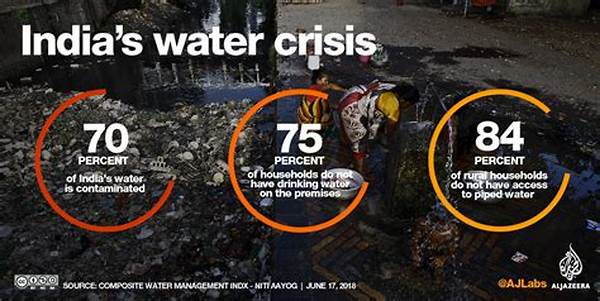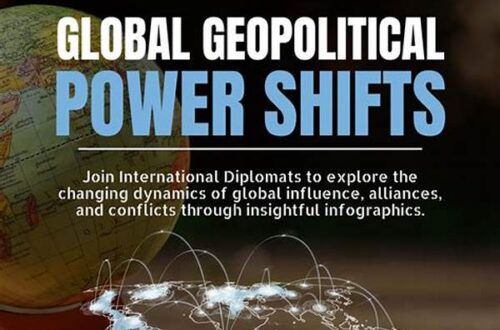The occurrence of water scarcity in post-conflict situations presents a formidable challenge to communities striving to rebuild their lives. The disruption of water supply systems, the waning state infrastructure, and the strain on already depleted resources exacerbate this issue. Understanding the many dimensions of water scarcity in post-conflict areas is crucial for fostering effective recovery and sustainable development. The aftermath of a conflict brings with it the necessity for comprehensive rehabilitation plans that prioritize water access to prevent further humanitarian crises.
Challenges and Impact
In post-conflict situations, water scarcity is an immediate concern that requires urgent attention. The destruction of infrastructure during conflicts severely hampers access to clean water. Furthermore, population displacement exacerbates the demand for water resources, overwhelming the existing, often insufficient, infrastructure. This scarcity impacts not only daily living but also health outcomes, as limited access to clean water increases vulnerability to diseases.
Water scarcity in post-conflict situations also affects economic recovery. Agriculture, a primary source of livelihood in many affected regions, is significantly hindered by water shortages. Consequently, this curtails food production, exacerbating food insecurity. To address these challenges, it is imperative to integrate water management into post-conflict reconstruction strategies. Emphasizing sustainable water practices provides a foundation upon which communities can rebuild healthy, stable, and prosperous environments.
Strategic Interventions
1. Reinforcing infrastructure is essential to mitigate water scarcity in post-conflict situations. Damaged infrastructure needs urgent repair and modernization to ensure efficient water distribution and access.
2. Implementing community-based water management programs can empower local populations to sustainably manage and optimize their water resources, crucial in addressing water scarcity in post-conflict situations.
3. International cooperation and aid are vital in supporting the reconstruction of water systems in post-conflict regions. Collaborative efforts can provide the necessary resources and expertise to combat water scarcity.
4. Regulatory frameworks need to be established or strengthened to govern water usage, preventing over-exploitation and mismanagement that often exacerbate water scarcity in post-conflict situations.
5. Technological solutions, such as water purification systems and efficient irrigation techniques, can mitigate the effects of water scarcity post-conflict situations, ensuring clean and accessible water sources.
Socio-Economic Effects
The socio-economic fabric of post-conflict regions is inextricably linked to the availability of water resources. Water scarcity in these situations can lead to tensions within communities as demand for limited resources grows. Society’s ability to re-establish livelihood activities, largely reliant on water, is crucial to economic stability and growth. Moreover, water scarcity in post-conflict situations can lead to gender disparities, as women are often tasked with water collection, affecting education and employment opportunities. Addressing these issues requires integrated approaches that consider societal norms, economic activities, and gender roles.
Water scarcity also poses a significant health risk, threatening the wellbeing of vulnerable populations. Contaminated water sources can lead to outbreaks, putting additional strain on recovering health systems. Therefore, integrating health initiatives focused on providing clean water and sanitation facilities is essential in post-conflict rehabilitation efforts. Community education campaigns can also play a role in promoting water conservation and hygiene practices.
Governance and Policy
Effective governance and policy-making are vital in addressing water scarcity in post-conflict situations. Establishing transparent regulatory frameworks ensures equitable water distribution, preventing conflicts over resources. Policies should prioritize rebuilding critical infrastructure while promoting sustainable management of water sources. Engaging local communities in the policy-making process can ensure that interventions are culturally appropriate and widely accepted.
International organizations play a critical role in supporting policy-making efforts by providing expertise and financial aid. Collaborating with local governments ensures that recovery strategies are comprehensive, equitable, and sustainable. Policies should also focus on fostering resilience within communities, encouraging initiatives that align with long-term water availability goals.
Technological Solutions
Technological advancements offer promising solutions to address water scarcity in post-conflict situations. Innovations in water purification and desalination can provide clean drinking water to affected populations. Infrastructure technologies, such as efficient distribution networks, can maximize available water resources. Implementing these technologies requires investment and collaboration between international aid organizations, governments, and private stakeholders.
Furthermore, remote sensing and data analytics can enhance water resource management by providing accurate assessments of water availability and distribution patterns. These technologies can guide strategic planning and decision-making processes in post-conflict recovery. Embracing technological solutions is essential to building resilient systems that withstand future challenges related to water scarcity.
Community Involvement
Community involvement is crucial to effectively addressing water scarcity in post-conflict situations. Local populations possess invaluable knowledge about their environment and can provide insights into sustainable water management practices. Encouraging community-led initiatives fosters ownership, accountability, and long-term success in water management interventions.
Training programs aimed at building local capacity in water management practices can empower communities to maintain and repair infrastructure, monitor water quality, and implement conservation strategies. Establishing community water associations or cooperatives can facilitate dialogue and cooperation among stakeholders, ensuring equitable access to water resources.
Conclusion
In conclusion, addressing water scarcity in post-conflict situations necessitates a multifaceted approach encompassing infrastructure development, community involvement, policy-making, and technological innovation. The complexities of water scarcity call for a coordinated effort from stakeholders at all levels. Ensuring equitable access to water resources is paramount for fostering sustainable recovery and development in post-conflict regions.
Water is not only a basic human need but a cornerstone for rebuilding societies. By prioritizing water scarcity solutions, we can lay the groundwork for resilient communities capable of thriving despite the challenges posed by conflict. It is through these concerted efforts that post-conflict regions can progress toward stability, security, and prosperity.





